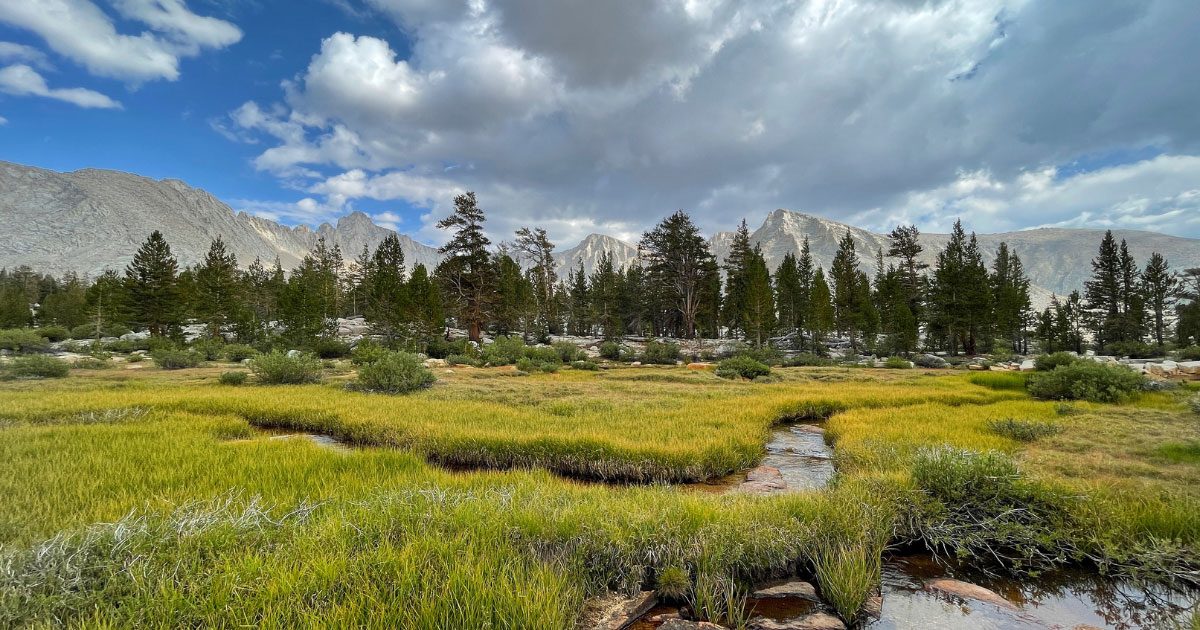California Trout is looking for unique ways to help California meet its commitment to preserve 30% of the state’s lands and waters by 2030, and now there is a promising yet underutilized tool that our organization is leading the way on developing─ the Outstanding Natural Resource Waters designation.

Let’s hear from Redgie Collins, CalTrout’s Legal & Policy Director, about this exciting news that will advance the 30×30 initiative:
What does an Outstanding Natural Resource Waters designation mean?
Pure and simple, the Outstanding Waters designation permanently protects rivers, lakes, estuaries, and aquifers from degradation. Outstanding Waters are afforded the greatest protection under the Federal Clean Water Act through the implementation of the federal Antidegradation policy. This policy prohibits the lowering of water quality in an ONRW except for under specific situations that lead to temporary and short-term water quality changes (such as restoration work).
What is the 30 x 30 effort?
California has chosen to join the nationwide and global push to preserve 30% of our land, ocean, and freshwater resources by 2030. In October of 2020, Governor Newsom issued an executive order to join the 30 x 30 movement. CalTrout supports this pledge and is working with the California Natural Resources Agency to implement strategies like Outstanding Waters designation and dam removal to meet this lofty goal. In fact, CalTrout’s Associate policy Director, Analise Rivero, is one of 15 people on the 30×30 Partnership Coordinating Committee that will advise the state on meeting this goal.
How will ONRW designation support 30×30?
Outstanding Waters designation will preserve California’s waterways in perpetuity, thus is a short-term strategy aimed to meet the goals of the 30 x 30 target. Protections afforded by an Outstanding Waters designation will provide another tool for conserving important California watersheds as part of the 30×30 implementation process.
Which waters is CalTrout wanting to protect with this designation?
We’re looking to make Outstanding Waters a tool for the entire state to utilize. We envision North Coast tributaries and source waters of the Lassen and Mount Shasta basalt aquifer systems as prime targets for designation, but we’re not quite ready to divulge our secrets just yet. We’re working with Pew Charitable Trust, CalWild, Trout Unlimited, and The Nature Conservancy to advance specific targets, but we want to make sure we engage the Regional Water Boards, tribal nations, and other local stakeholders before announcing our targets in early 2023 (stay tuned!).
How is CalTrout uniquely positioned to endorse ONRW designations?
CalTrout’s science-based, collaborative approach will allow us to identify the best candidates for ONRW designations. Our 60+ active restoration projects and our leadership as one of the largest freshwater restoration practitioners in the state, gives us a unique glimpse into some of the most important watersheds.
We also partner with academic institutions like UC Berkeley and UC Davis that help drive these designations through the lens of science and ecological importance. We work closely with agencies that are tasked with implementing 30 x 30 and our advocacy team in Sacramento will help us raise awareness and support of Outstanding Waters designation.
CalTrout has worked hard to understand the legal and policy implications of Outstanding Waters designation. Our thorough research and partnership building over the last four years has led us to a point where we’re ready to embrace the challenges that will come with protecting our key waterways with this important protection.
We can’t wait to share with you all the watersheds that we are targeting for short term Outstanding Waters designation, so stay tuned for our unveiling in the next calendar year!
For more on CalTrout’s work with ONRW: www.ppic.org/blog/a-new-tool-could-help-protect-30-of-the-states-waters-by-2030/
Cover photo by Anthony Jenca.





